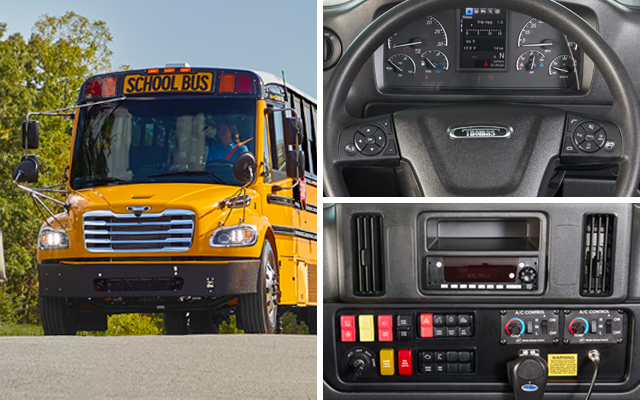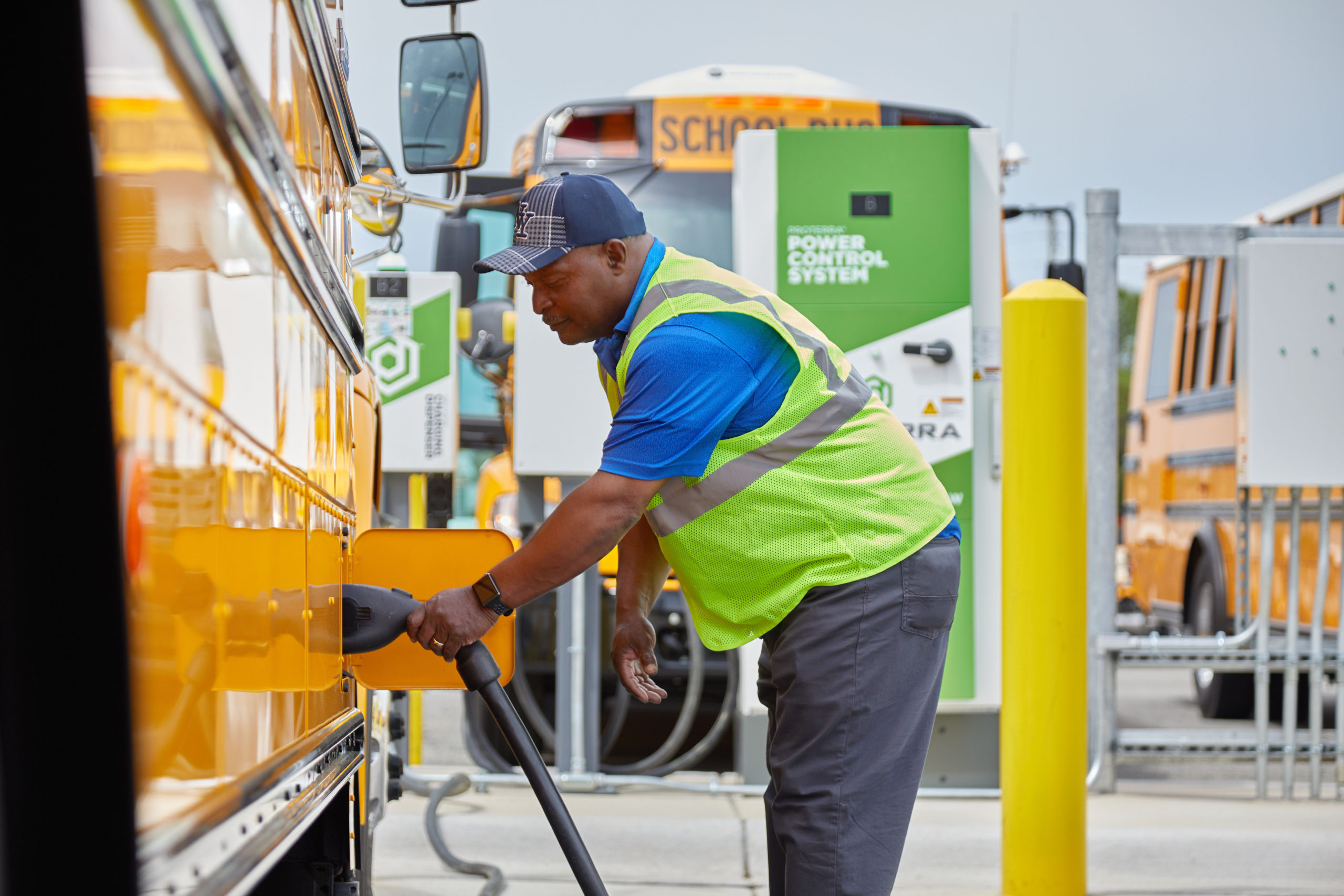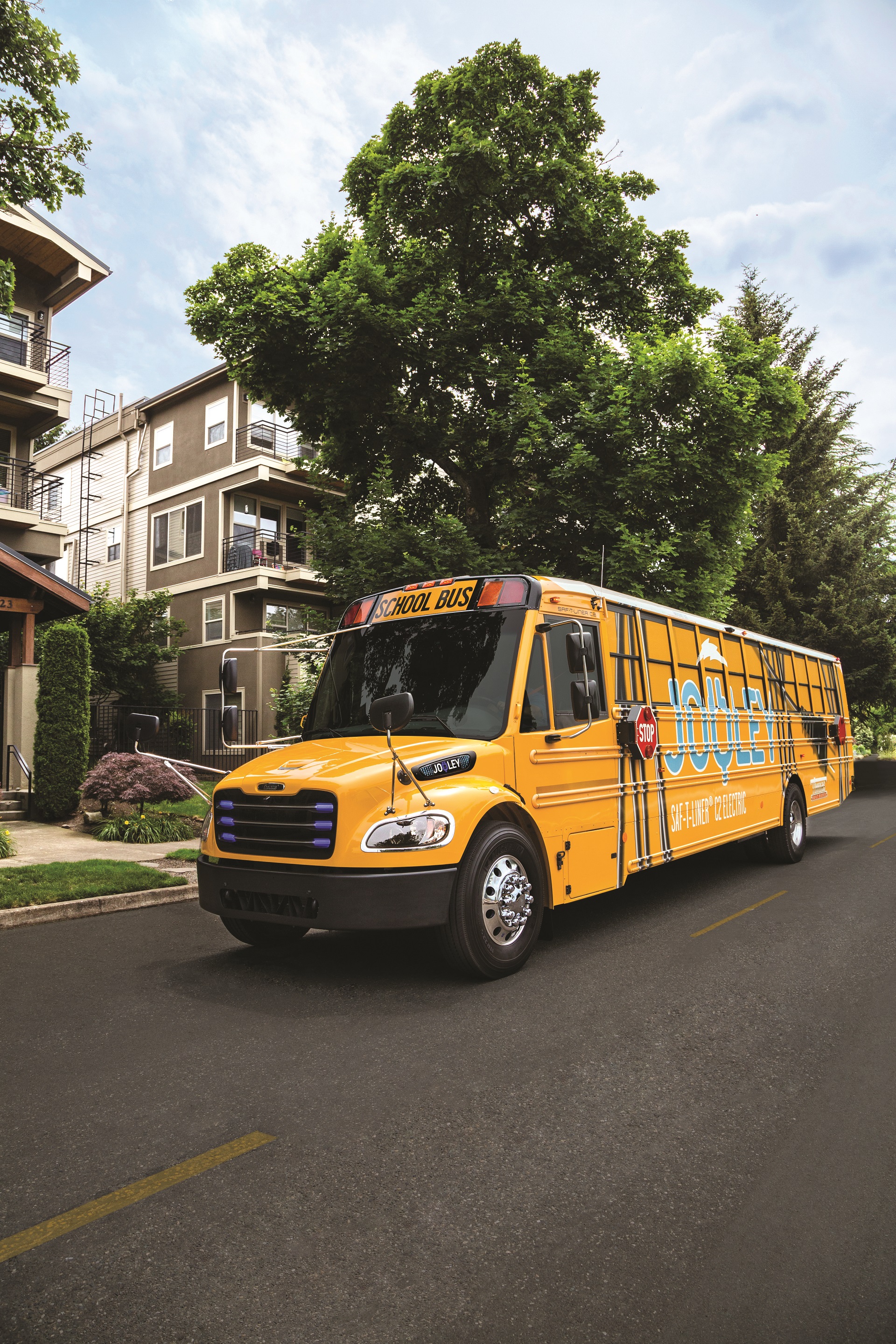
In today’s rapidly evolving industrial landscape, sustainability has become a global focus. But what does that even mean? For Thomas Built Buses, it’s about defining our commitment to our organization, our industry and the communities we serve. While our electric school bus, the Saf-T-Liner® C2 Jouley®, and its many milestones (including the recent delivery of our 1,000th) often come to…

Upgrading the C2’s User-Experience for a New Era of Drivers
Student safety is in the hands of school bus drivers. The more comfortable and confident drivers feel, the more safely they drive.
For the last 20 years, Thomas Built Buses has supplied the industry with advanced electronics engineered with safety prioritized in every detail. Our Saf-T-Liner® C2 was designed…

As electric school buses continue to gain momentum across the U.S. through federal incentives like the EPA’s Clean School Bus Program, school districts are looking for help in transitioning their traditional bus fleets to electric, including building out electric vehicle (EV) infrastructure.
Building and implementing charging infrastructure can be a daunting task, with challenges…

From Kendra Eads, VP of Engineering and Technology at Thomas Built Buses
As we gear up for the back-to-school season, it’s important to recognize the significant advancements in school bus technology that enhance the safety and well-being of our students during their daily journeys.
At Thomas Built Buses, our commitment to safety is evident in our mission and…

It’s a new and exciting day in the school bus industry. With electric vehicle technology advancing at a rapid pace, the feasibility for electric school buses is becoming a reality for many districts across the nation, not just those in California and New York. But after you decide that you want to convert to electric, how do you get started? To be honest, it can seem overwhelming, but it is not impossible with the right help.
Today, leading school bus manufacturer Thomas Built Buses is offering state-of-the-art electric school bus technology with their Saf-T-Liner® C2 Jouley electric school bus. And more than that, Thomas Built is also paving the way for districts to go electric. Thomas Built Buses’ dealers and a growing team of EV specialists are meeting one-on-one with customers to help them navigate this new world of electric school buses. From grant application processes to partnering with utility providers, Thomas Built Buses is making it easy for districts to convert to electric school buses.
If you are thinking about converting to electric school buses, here is a list of a few things to consider when getting started on the road to EV.
- Start the Conversation – Before you start thinking about spec’ing, funding or charging infrastructure, it’s important to take a step back and start engaging with all key stakeholders in your district. Start with your local Thomas Built dealer to learn the ins and outs of procuring and running electric school buses. The dealer can explore different use cases with you and determine if electric school buses are right for your district, including what your particular needs may be. Then, discuss it with your transportation directors, mechanics and drivers, parents and teachers, school administration and finance staff and even state legislators. Everyone needs to be aware of the costs, benefits, features and drawbacks of adding electric school buses to your fleet.
- Gather the Facts – By engaging with all stakeholders and your local dealer, you will most likely uncover unique needs for your district. You will need to consider route lengths to procure the correct battery setup. Some districts may be interested in being able to supply electricity back to the utility grid. Still, others may find that DC charging power is the right choice for them. Knowing your unique needs upfront will help to frame up how you will spec your buses, the types of infrastructure you’ll need as well as the costs associated with those specs.
- Explore Utility Provider Offerings – Next, it’s important to coordinate with your local electric utility provider to discuss charging infrastructure. Together with Thomas Built representatives, you can discuss rates, possibly buy-back or battery storage revenues, infrastructure type, AC vs. DC charging options, power location, etc. Some bus yards, in fact, are not able to accommodate some types of charging infrastructure, while many new builds or renovated properties can accommodate conduits directly in the ground. Exploring your charging needs and options upfront sets the stage for the type or number of buses that may work for you.
- Review Specs, Procurement Processes and Funding – After all specs have been confirmed, take steps to be sure that electric buses are part of your state’s procurement contracts and start to make revisions if necessary. At the same time, start looking into funding such as state incentives, vouchers, utility providers and private foundations that can help to offset the cost of procuring new electric school buses as well as infrastructure purchase and installation.
- Review Charging, Maintenance and Driving Best Practices – After your buses arrive, your work is nearly done. Be sure to work one-on-one with your Thomas Built Buses dealer to develop a charging plan for your new electric school buses as well as fundamental driver and maintenance training protocols.
Taking these steps will ensure that you will be well on your way to a successful school year with new electric school buses. If you would like to learn more about incorporating electric school buses into your own fleet stop here for more information.
